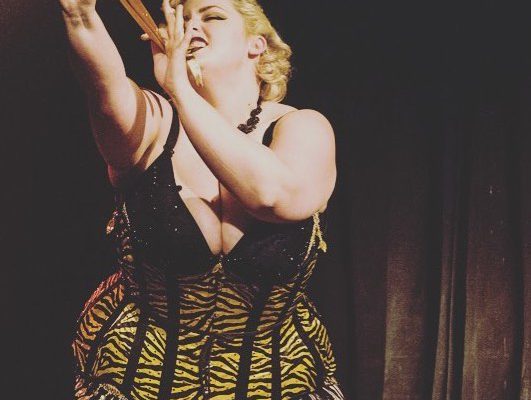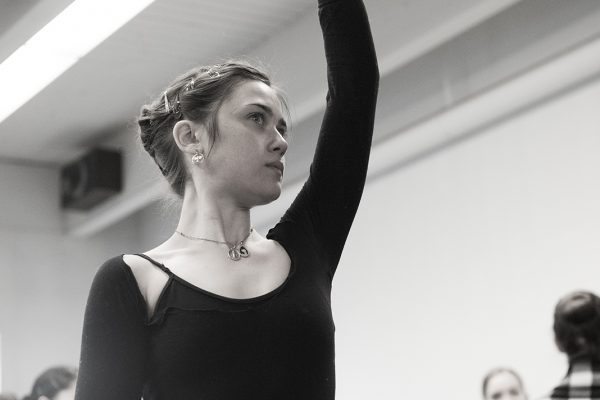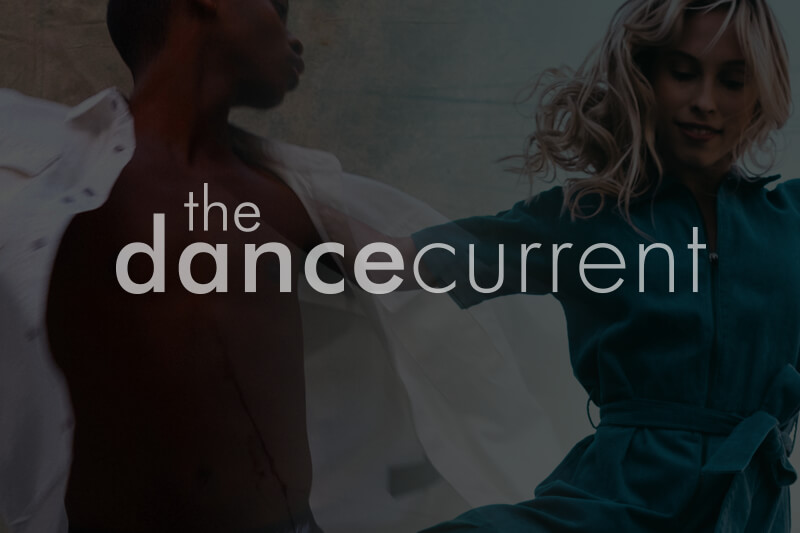ON STORY
In my Chalmers Fellowship Research, I looked at cultural nuances of the Caribbean and the codifying of a technical practice for diversely trained dancers. I have come to appreciate storytelling as a part of the Caribbean’s artistic narrative. My relationship to the Peeks Toronto Caribbean Carnival (commonly and in this article referred to as “Caribana”) is one through which Carnival Arts play a central role in connecting people, traditions and communities. I think of Carnival and Caribana as communal collective history, shaped by a legacy of social engagement and cultural identification.
Coming to Canada from Jamaica, I arrived in Malvern, a neighbourhood of Toronto, on August 8th, 1992, and attended Lester B. Pearson Collegiate. Malvern has been a cultural hot spot for Caribbean immigrants for decades including Jamaica’s prominent folklorist and national icon, Louise Bennett-Coverley. It was here I had my first lessons in Carnival Arts, Afro-Caribbean dance and Caribbean sociocultural significance. The area shaped my identity and participation in community arts with some of Caribana’s main players and creators: my relationship to this performance tradition was shaped by Tamla Matthews, Martin Scott Pascall and Jessie Matthews (the latter being Caribana’s most decorated female band leader). Caribana became our stage.

ON HISTORY
Given the Caribbean’s formation through colonialism and slavery, blending European traditions with African ones is reality in all of its countries. In Canada, Caribbean immigrants sought to affirm their identities in new spaces, and Caribana was one of these venues. Beginning in Toronto, it spread across Canada. Many Caribbean ethnicities live in Canada, and Caribana drew this visibility to the streets.
There is special significance in its timing and formation in Canada: it’s celebrated around two significant periods in our history – the proclamation of Emancipation Day (Aug 1st, 1834) and Simcoe Day (in honour of the signing of the Act to Prevent the Further Introduction of Slaves and to Limit the Terms of Contracts for Servitude Within Ontario).
There are socioeconomic discrepancies that plague the festival and blemish its intentions. To this day Caribana and its iterations across Canada are under-resourced and heavily bureaucratized. As North America’s largest Caribbean cultural festival, with an estimated two million people in attendance (the largest audience in Ontario) and a contribution of around $400 million to Ontario’s GDP annually, the allocations to Caribana were only 7.74 per cent of the total City of Toronto allocations in 2016. This statistic stands out, considering the 16.5 per cent of overall revenue it brings into the province every year. So significant is this festival that it has been replicated across Canada: Carib-Expo (Ottawa), Carifesta (Montréal), Carifest (Calgary), Cariwest (Edmonton), Caripeg (Winnipeg). Carnival (Hamilton) and Caribfest (Barrie) have since been cancelled.
ON PRESENCE
As a performance art practice, elements of Carnival and its related movements, music and rituals can happen anywhere, in any type of venue or occasion and for any length of time. A manifestation of Caribana could involve the following components, listed by Historica Canada:
• calypso “tents” (shows)
• jump-ups (dances)
• fetes (parties)
• mas (masquerade) competitions
• a junior carnival
• pan blockos or blockoramas (steel band street parties)
• talk tents (shows featuring storytellers, comedians and others well versed in oral traditions)
Keeping in mind these varied practices – those that are spontaneous, contested, framed and curated – I want to explore how dance artists understand Carnival as a performance arts practice. What is the relationship between the performer and the spectator? It’s difficult for anyone to go to Caribana and not want to play a mas, dance, chip (small steps done progressively to the sounds and beat of the music) and “buss a whine” (the circular motions of the pelvis seen in many African derivative dance forms in the West). However, in what ways do performers negotiate the elements of time, space and presence?
Tradition is shaped through ritual actions and the practising and repetition of these actions, allow tradition to be passed on – what cultural anthropologist Alice Horner coins the “idea of tradition as a reservoir.” Through migration, Carnival traditions in Canada allow for the performance of cultural presence. Showing up became an act/performance of reclamation, affirmation, curiosity and support. In fact, for the many years I performed in the festivities of Caribana – from costume construction, to performer, to participant on parade day – I was reminded of the importance of everyone’s presence in the revelry of the spectacle, as active or passive participants. We all played a role in shaping the Caribbean’s presence in Canada.
Carnival and its preparation set the stage for connecting African traditions with European forms in the Caribbean and the aesthetic arrived in a decidedly North American context. From my perspective, Caribbean dance travels in migratory patterns and through bodies, in which the politics of presence becomes a performance, one that is about holding on to traditions. Caribbean carnivals are some of the original in situ performance art, where dance conversed with music, instigated art, honoured traditions and recreated folklore in the theatre of the streets. Involved at all stages is an intergenerational presence and the performance of familial support that shaped generations of Caribbean-Canadian descendants.
Tamla Matthews (instrumental to my introduction to dance in Canada) is no exception: she has been a member of her mother’s mas band, Jessie Matthews and the Callabash Company, which helped Malvern come alive and the mas camp buzz all day, into the night and morning. Similarly, the dancers in Dance Caribe Performing Company would lead out each dance section for judging and would choreograph the routines revelers performed “on de road.” At one point in Caribana’s history, most of the Black dancers in the city would “jump” (play mas) with Jessie Matthews and the Callabash Company. She mentions that it was her interests in the “cultural traditions of Carnival, the adaptation of theatrical and physical elements” that led her to start her band. In exploring the preservation of Carnival Arts in Canada, the mas camp was, she describes, “a community, a space of historical activation and cultural interaction.”
ON RITUAL
What happens in the ritual of preparation, creation, execution and presentation of Caribana? Ritual actions are required for any Caribana event – from sewing and gluing costumes, to marketing, to throwing blockos (block parties). However, in contemporary Carnival traditions, there is an increasing push toward “outsourcing” these preparations, leading to a separation from some of the historical traditions and rituals band leaders and their communities previously practised.
The steel pan (the only family of chromatic, acoustic instruments invented in the twentieth century) is an essential component of this aspect of Carnival. Its creation, from ordinary oil drums, is a ritual in which the steel is cut, heated and shaped in such a way as to create melodic music. These magnificent sounds married the glorious, larger-than-life costumes of the king and queen for interesting theatrical effects. Ultimately, the instrument is a link between the music of Carnival and the movement of Carnival “on de road.”
Thematic conceptualization of costuming, sketching and wire bending is all involved in the preparation stages. Wire bending – an integral component of costume making and an art form in its own right – is the perfect combination of physics, architecture and the art of moulding. The practice has been a central part of the conceptualization of costume design in the viscerality of the Carnival. But as costumes become smaller and more commercially available, wire bending is at risk of being a lost art. Larger costumes and their performative pageantry offer commentary on the emancipatory resilience that expresses the survival of Africans on the plantations of the Caribbean. Without this practice carnivals like Caribana risk losing an essential component in the performance and ritual of creation.
Ritual is central to navigating representation in Carnival. For the creators of street theatre, this is no easy feat; they illustrate integral moments connected to slavery and liberation and portray an epic spectacle of political commentary in Carnival traditions.
ON BECOMING
Carnival is shifting toward the next iteration of its existence. I’m curious about how Carnival’s history, performance, spacial disruption and cultural production continues.
Tamla, bred and grounded in the tradition of Afro-Caribbean dance and Carnival through her mother, Jessie, is passionate about the transference of dance from mothers to daughters. In her work with the youth-focused, Malvern-based, Roots and Branches dance program, she sees Caribana as a way for her students to learn about themselves, Carnival culture and its traditions the way she and I did through her mother.
Wary of losing a creative community through commodification, Tamla speaks to the loss of familial ties in mas making and also through leadership in Caribana. “Generations are and have grown without the experience of mas making, mas building and history,” she explains. “How can we cultivate the future generations of mas leaders? How do we make sure to not silence the female influence and voice in mas making? How do we understand the importance of realigning the performance of the Carnival arts to who we are as Caribbean immigrants, our values and presence?”
She is adamant that the city and Caribana organizers should explore collaborative creation. This collaboration would support her mother’s questions: “If present costuming cannot depict traditions, mas, storytelling and the theatrical context that was at the heart of Carnival, what would it mean to have a formalized J’ouvert focusing on traditional mas as part of the festival? How do we affirm Caribbean cultural significance as part of Canadian culture?” At stake is the power of Carnival as an act of resistance/liberation in which the performer’s body becomes political. The audience’s role is twofold, as viewer and assessor. How you dance and with which movements and traditions have meaning for those who know the code; understanding is cultural currency – a transference.
When discussing transference of Carnival arts, Tamla and I revel in the work of performance artist Anique Jordon. She was a student of ours at Scarborough Caribbean Youth Dance Ensemble. As a first generation Canadian with Trinidadian parents, Jordan is rooted in the artistic expression of emerging Black Arts leaders. She is interested in the old mas traditions, the processional rhythm of bodies in space and alternative futurism, which facilitates interplay between Carnival generations. Her work with the “blue devils” concept, taken from the J’ouvert ole mas tradition, has received critical acclaim.
Tamla also explores aspects of Carnival culture that have been lost in performance to focus on how Caribbean nationals experience Canada. For her, the intergenerational conversations – the bureaucracy of underfunding, policing, barricades etc. – impedes the full liberation on which Carnival was built. This, she mentions, is the “potential for Carnival to mean something different over time and in new spaces.” Artists like herself and others find space in how and in what ways Canadian carnivals like Caribana can more broadly represent the influence traditions made in the Canadian landscape. Where and in what ways can social activism through performance art return to Caribana and connect to ole mas traditions?
Traditional Carnival is a link to the history of Trinidad and Tobago, the Caribbean and the world. Tamla is interested in the potential of the “carnivalesque” – a concept of theorist Mikhail Bakhtin and a space that challenges us to think of Carnival not only as a liberating moment unleashed in performance but also a space of interaction beyond the present moment. For Bakhtin, Carnival and the carnivalesque create an alternative performance space, indicative of freedom and abundance. The body in this performance is both individual and collective. Carnival, as performance art, invites you to collaborate on moving through and taking space where the individual is in choreography with the people playing mas. Bakhtin sees this as the space where one transcends through performance from the isolated individual to the collective traditional or ancestral being.
I spoke with Tamla about this idea and she agreed that Carnival should always be a space of challenging dominant ways of seeing and being and the cultural expectations of Caribbean nationals. In performing alternative realities and variance, we can continue to reflect the diversity that created the Caribbean and Canadian carnivals. It requires, for me, a reinterpretation of the Caribbean, its history, impact, relationship to power and colonialism and Canadian cultural dominance. My latest collaborative work in development, Re:Imagining TPM (Time Place and Movement) was developed out of my curiosity of this renegotiation of identity. In Canada and for Peeks Toronto Caribbean Carnival (Caribana), the true performance art and dance exists in honouring and supporting the progression of Carnival Arts practices.





